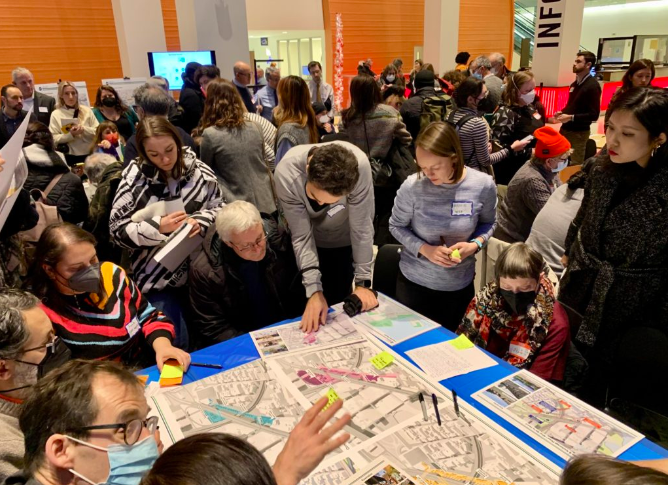Brooklyn officials to NYC DOT: Don’t blow this chance for a ‘forward-thinking’ BQE

The BQE public engagement workshop Tuesday night was literally standing-room-only.
From Brooklyneagle.com
The upcoming, multi- billion dollar rehab of the Brooklyn-Queens Expressway (BQE) is supposed to be visionary, ushering in a new era of urban transportation, reducing traffic and pollution, increasing equity and reimagining our urban landscape.
But the preliminary de- signs the city released last week for the BQE Central portion of the redesign fail to reach those goals, Brooklyn officials told the New York City Department of Transportation on Friday.